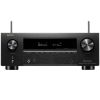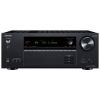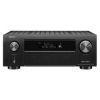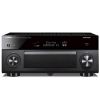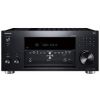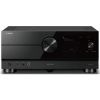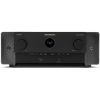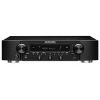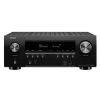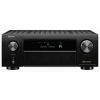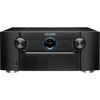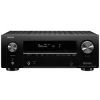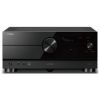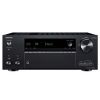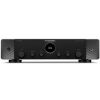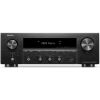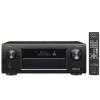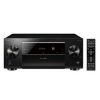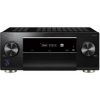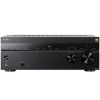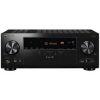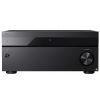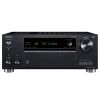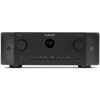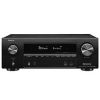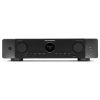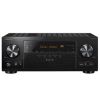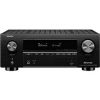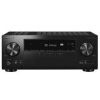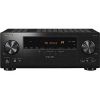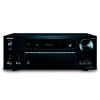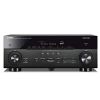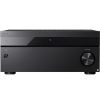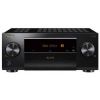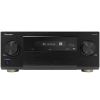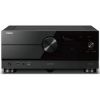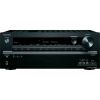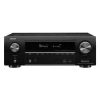-
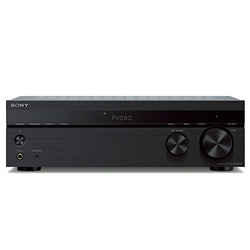
Sony STR-DH190
- Sony
- | 200
- 1970
- Overall 5/10
- | Amplifier 7/10
- | Audio features 6/10
- | Connectivity 5/10
- | Streaming services 0/10
- | Extensive connection 4/10
- | Multi-room 0/10
- | Additional features 4/10
-
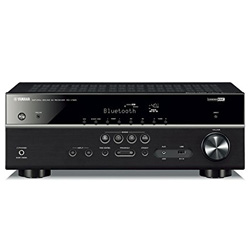
Yamaha RX-V385
- Yamaha
- | 300
- 1015
- Overall 5/10
- | Amplifier 5/10
- | Audio features 6/10
- | Connectivity 5/10
- | Streaming services 4/10
- | Extensive connection 6/10
- | Multi-room 0/10
- | Additional features 6/10
- | Video features 8/10
- | Multichannel surround 5/10
-
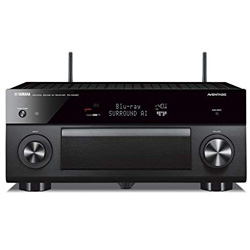
Yamaha AVENTAGE RX-A2080
- Yamaha
- | 1600
- 58
- Overall 8.6/10
- | Amplifier 8/10
- | Audio features 9/10
- | Connectivity 8/10
- | Streaming services 8/10
- | Extensive connection 9/10
- | Multi-room 10/10
- | Additional features 10/10
- | Video features 9/10
- | Multichannel surround 7/10
-
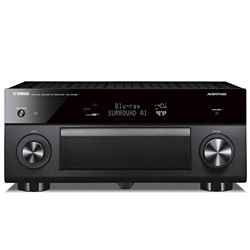
Yamaha AVENTAGE RX-A3080
- Yamaha
- | 2000
- 72
- Overall 8.7/10
- | Amplifier 9/10
- | Audio features 9/10
- | Connectivity 8/10
- | Streaming services 8/10
- | Extensive connection 9/10
- | Multi-room 10/10
- | Additional features 10/10
- | Video features 9/10
- | Multichannel surround 7/10
-
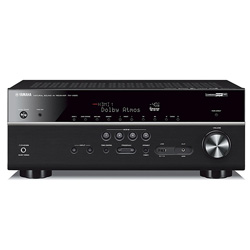
Yamaha RX-V685BL
- Yamaha
- | 600
- 394
- Overall 7.4/10
- | Amplifier 8/10
- | Audio features 9/10
- | Connectivity 8/10
- | Streaming services 5/10
- | Extensive connection 7/10
- | Multi-room 8/10
- | Additional features 7/10
- | Video features 8/10
- | Multichannel surround 7/10
-
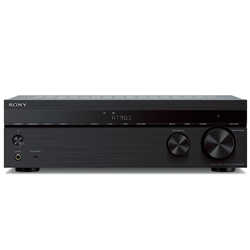
Sony STR-DH790
- Sony
- | 400
- 713
- Overall 5.3/10
- | Amplifier 7/10
- | Audio features 8/10
- | Connectivity 6/10
- | Streaming services 0/10
- | Extensive connection 7/10
- | Multi-room 0/10
- | Additional features 6/10
- | Video features 7/10
- | Multichannel surround 7/10
-
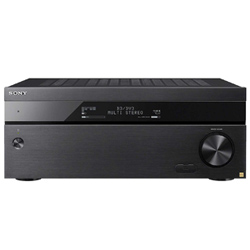
Sony STR-ZA2100ES
- Sony
- | 1400
- 7
- Overall 6.5/10
- | Amplifier 7/10
- | Audio features 7/10
- | Connectivity 6/10
- | Streaming services 0/10
- | Extensive connection 7/10
- | Multi-room 8/10
- | Additional features 7/10
- | Video features 10/10
- | Multichannel surround 7/10
-

Yamaha RX-V385BL
- Yamaha
- | 300
- 1164
- Overall 4.7/10
- | Amplifier 6/10
- | Audio features 5/10
- | Connectivity 6/10
- | Streaming services 0/10
- | Extensive connection 7/10
- | Multi-room 0/10
- | Additional features 5/10
- | Video features 9/10
- | Multichannel surround 5/10
-
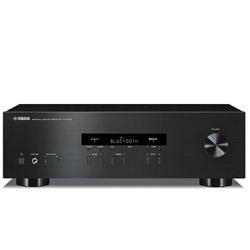
Yamaha R-S202BL
- Yamaha
- | 200
- 2643
- Overall 4.8/10
- | Amplifier 8/10
- | Audio features 5/10
- | Connectivity 4/10
- | Streaming services 0/10
- | Extensive connection 2/10
- | Multi-room 0/10
- | Additional features 5/10
-
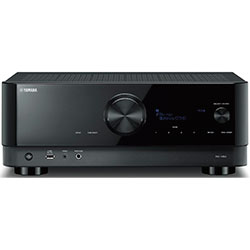
Yamaha RX-V6A
- Yamaha
- | 600
- 15
- Overall 7.4/10
- | Amplifier 7/10
- | Audio features 7/10
- | Connectivity 9/10
- | Streaming services 10/10
- | Extensive connection 7/10
- | Multi-room 5/10
- | Additional features 9/10
- | Video features 7/10
- | Multichannel surround 6/10
-
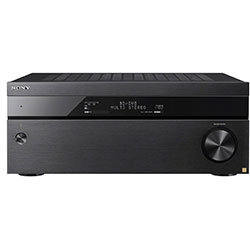
Sony STRZA1100ES
- Sony
- | 1100
- 20
- Overall 6.6/10
- | Amplifier 7/10
- | Audio features 7/10
- | Connectivity 5/10
- | Streaming services 0/10
- | Extensive connection 6/10
- | Multi-room 7/10
- | Additional features 7/10
- | Video features 7/10
- | Multichannel surround 7/10
-
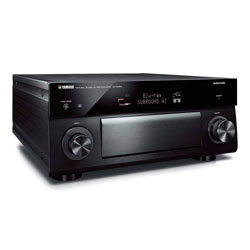
Yamaha CX-A5200
- Yamaha
- | 2700
- 18
- Overall 8.7/10
- | Amplifier 9/10
- | Audio features 8/10
- | Connectivity 8/10
- | Streaming services 8/10
- | Extensive connection 9/10
- | Multi-room 10/10
- | Additional features 10/10
- | Video features 10/10
- | Multichannel surround 7/10
-
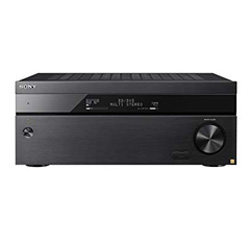
Sony STRZA5000ES
- Sony
- | 2200
- 11
- Overall 7.3/10
- | Amplifier 8/10
- | Audio features 7/10
- | Connectivity 6/10
- | Streaming services 0/10
- | Extensive connection 7/10
- | Multi-room 10/10
- | Additional features 6/10
- | Video features 9/10
- | Multichannel surround 8/10
-
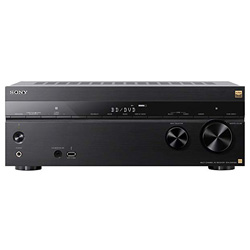
Sony STR-ZA810ES
- Sony
- | 700
- 33
- Overall 7.4/10
- | Amplifier 7/10
- | Audio features 7/10
- | Connectivity 9/10
- | Streaming services 7/10
- | Extensive connection 7/10
- | Multi-room 6/10
- | Additional features 8/10
- | Video features 9/10
- | Multichannel surround 7/10
-
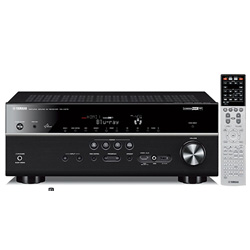
Yamaha RX-V675
- Yamaha
- | 600
- 689
- Overall 6.7/10
- | Amplifier 7/10
- | Audio features 8/10
- | Connectivity 8/10
- | Streaming services 6/10
- | Extensive connection 7/10
- | Multi-room 6/10
- | Additional features 6/10
- | Video features 8/10
- | Multichannel surround 5/10
-
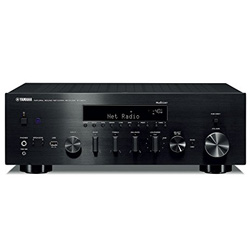
Yamaha R-N803BL
- Yamaha
- | 800
- 61
- Overall 6.7/10
- | Amplifier 7/10
- | Audio features 7/10
- | Connectivity 8/10
- | Streaming services 8/10
- | Extensive connection 6/10
- | Multi-room 4/10
- | Additional features 7/10
-
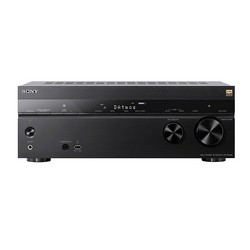
Sony STR-DN1080
- Sony
- | 600
- 778
- Overall 7.3/10
- | Amplifier 7/10
- | Audio features 7/10
- | Connectivity 8/10
- | Streaming services 8/10
- | Extensive connection 7/10
- | Multi-room 6/10
- | Additional features 9/10
- | Video features 7/10
- | Multichannel surround 7/10
-
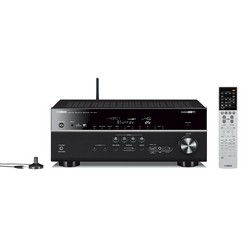
Yamaha RX-V677
- Yamaha
- | 600
- 580
- Overall 6.8/10
- | Amplifier 7/10
- | Audio features 8/10
- | Connectivity 9/10
- | Streaming services 6/10
- | Extensive connection 6/10
- | Multi-room 7/10
- | Additional features 7/10
- | Video features 7/10
- | Multichannel surround 5/10
-
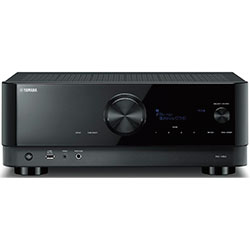
Yamaha RX-V4A
- Yamaha
- | 500
- 6
- Overall 6.5/10
- | Amplifier 6/10
- | Audio features 7/10
- | Connectivity 9/10
- | Streaming services 10/10
- | Extensive connection 5/10
- | Multi-room 0/10
- | Additional features 7/10
- | Video features 7/10
- | Multichannel surround 5/10
-
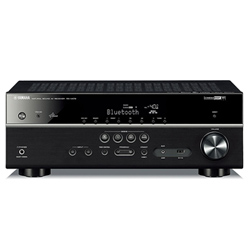
Yamaha RX-V479BL
- Yamaha
- | 500
- 116
- Overall 5.2/10
- | Amplifier 5/10
- | Audio features 6/10
- | Connectivity 8/10
- | Streaming services 4/10
- | Extensive connection 6/10
- | Multi-room 0/10
- | Additional features 7/10
- | Video features 6/10
- | Multichannel surround 5/10
-
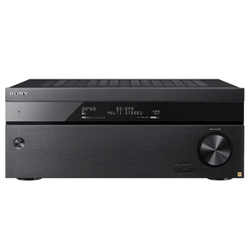
Sony STR-ZA3100ES
- Sony
- | 1700
- 6
- Overall 6.3/10
- | Amplifier 7/10
- | Audio features 7/10
- | Connectivity 6/10
- | Streaming services 0/10
- | Extensive connection 9/10
- | Multi-room 8/10
- | Additional features 6/10
- | Video features 7/10
- | Multichannel surround 7/10
-
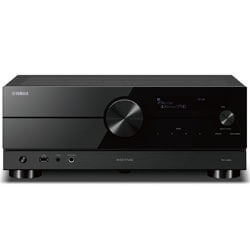
Yamaha RX-A2A
- Yamaha
- | 1000
- Overall 8.2/10
- | Amplifier 8/10
- | Audio features 9/10
- | Connectivity 9/10
- | Streaming services 10/10
- | Extensive connection 7/10
- | Multi-room 7/10
- | Additional features 10/10
- | Video features 7/10
- | Multichannel surround 7/10
-
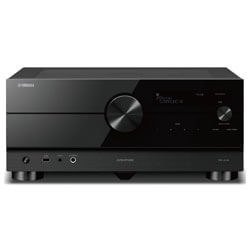
Yamaha RX-A4A
- Yamaha
- | 1300
- Overall 8.7/10
- | Amplifier 8/10
- | Audio features 9/10
- | Connectivity 9/10
- | Streaming services 10/10
- | Extensive connection 8/10
- | Multi-room 8/10
- | Additional features 10/10
- | Video features 8/10
- | Multichannel surround 7/10
-
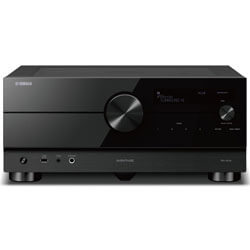
Yamaha RX-A6A
- Yamaha
- | 2300
- Overall 9.3/10
- | Amplifier 9/10
- | Audio features 9/10
- | Connectivity 9/10
- | Streaming services 10/10
- | Extensive connection 10/10
- | Multi-room 10/10
- | Additional features 10/10
- | Video features 9/10
- | Multichannel surround 8/10
-
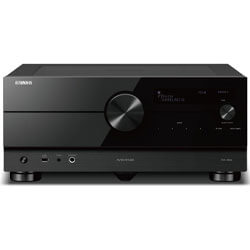
Yamaha RX-A8A
- Yamaha
- | 3000
- Overall 9.4/10
- | Amplifier 10/10
- | Audio features 9/10
- | Connectivity 9/10
- | Streaming services 10/10
- | Extensive connection 10/10
- | Multi-room 10/10
- | Additional features 10/10
- | Video features 9/10
- | Multichannel surround 8/10
-
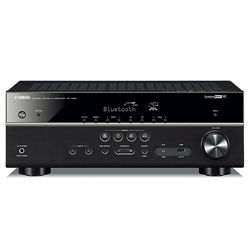
Yamaha RX-V485BL
- Yamaha
- 348
- Overall 6.6/10
- | Amplifier 5/10
- | Audio features 9/10
- | Connectivity 8/10
- | Streaming services 7/10
- | Extensive connection 6/10
- | Multi-room 4/10
- | Additional features 8/10
- | Video features 8/10
- | Multichannel surround 5/10
-
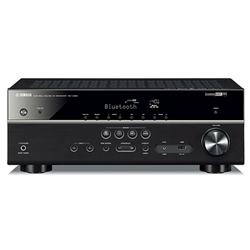
Yamaha RX-V485
- Yamaha
- 348
- Overall 7.4/10
- | Amplifier 6/10
- | Audio features 9/10
- | Connectivity 7/10
- | Streaming services 9/10
- | Extensive connection 8/10
- | Multi-room 5/10
- | Additional features 9/10
- | Video features 9/10
- | Multichannel surround 5/10
-
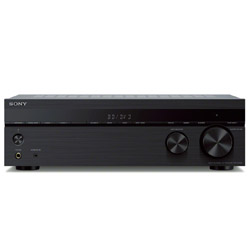
Sony STR-DH590
- Sony
- 1374
- Overall 4.2/10
- | Amplifier 6/10
- | Audio features 5/10
- | Connectivity 5/10
- | Streaming services 0/10
- | Extensive connection 6/10
- | Multi-room 0/10
- | Additional features 4/10
- | Video features 6/10
- | Multichannel surround 5/10
-
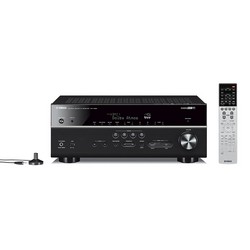
Yamaha RX-V683BL
- Yamaha
- 1148
- Overall 7.1/10
- | Amplifier 7/10
- | Audio features 8/10
- | Connectivity 7/10
- | Streaming services 7/10
- | Extensive connection 6/10
- | Multi-room 6/10
- | Additional features 7/10
- | Video features 9/10
- | Multichannel surround 7/10
-
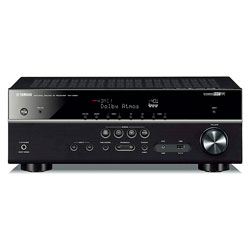
Yamaha RX-V583
- Yamaha
- 102
- Overall 7.3/10
- | Amplifier 7/10
- | Audio features 8/10
- | Connectivity 9/10
- | Streaming services 7/10
- | Extensive connection 6/10
- | Multi-room 4/10
- | Additional features 9/10
- | Video features 9/10
- | Multichannel surround 7/10
-

Yamaha RX-A780
- Yamaha
- 124
- Overall 8.2/10
- | Amplifier 7/10
- | Audio features 9/10
- | Connectivity 8/10
- | Streaming services 8/10
- | Extensive connection 9/10
- | Multi-room 8/10
- | Additional features 10/10
- | Video features 8/10
- | Multichannel surround 7/10
-
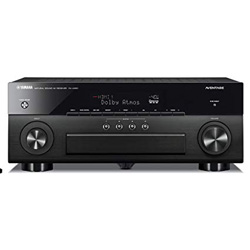
Yamaha RX-A880
- Yamaha
- 80
- Overall 8.3/10
- | Amplifier 8/10
- | Audio features 9/10
- | Connectivity 8/10
- | Streaming services 8/10
- | Extensive connection 9/10
- | Multi-room 8/10
- | Additional features 10/10
- | Video features 8/10
- | Multichannel surround 7/10
-

Sony STR-DN1040
- Sony
- 343
- Overall 6.1/10
- | Amplifier 7/10
- | Audio features 6/10
- | Connectivity 9/10
- | Streaming services 4/10
- | Extensive connection 7/10
- | Multi-room 5/10
- | Additional features 6/10
- | Video features 6/10
- | Multichannel surround 5/10
-
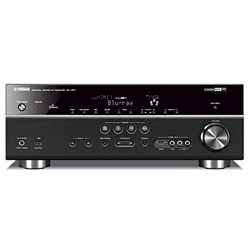
Yamaha RX-V671
- Yamaha
- 265
- Overall 6.1/10
- | Amplifier 7/10
- | Audio features 8/10
- | Connectivity 7/10
- | Streaming services 4/10
- | Extensive connection 6/10
- | Multi-room 6/10
- | Additional features 6/10
- | Video features 6/10
- | Multichannel surround 5/10
-
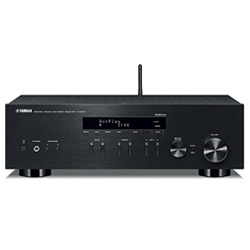
Yamaha R-N303BL
- Yamaha
- 457
- Overall 6/10
- | Amplifier 7/10
- | Audio features 6/10
- | Connectivity 7/10
- | Streaming services 8/10
- | Extensive connection 4/10
- | Multi-room 0/10
- | Additional features 6/10
-
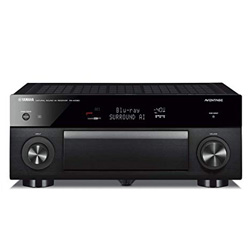
Yamaha AVENTAGE RX-A1080
- Yamaha
- 95
- Overall 8.3/10
- | Amplifier 8/10
- | Audio features 9/10
- | Connectivity 8/10
- | Streaming services 8/10
- | Extensive connection 9/10
- | Multi-room 8/10
- | Additional features 10/10
- | Video features 8/10
- | Multichannel surround 7/10
-
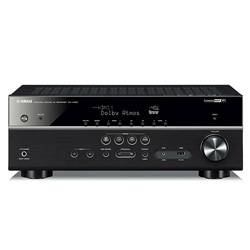
Yamaha RX-V585BL
- Yamaha
- 66
- Overall 7.3/10
- | Amplifier 7/10
- | Audio features 9/10
- | Connectivity 8/10
- | Streaming services 9/10
- | Extensive connection 6/10
- | Multi-room 4/10
- | Additional features 8/10
- | Video features 8/10
- | Multichannel surround 7/10
-
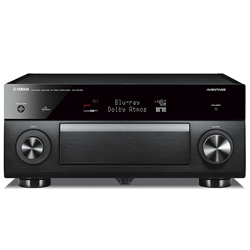
Yamaha CX-A5100
- Yamaha
- 23
- Overall 8.3/10
- | Amplifier 9/10
- | Audio features 8/10
- | Connectivity 8/10
- | Streaming services 7/10
- | Extensive connection 9/10
- | Multi-room 10/10
- | Additional features 8/10
- | Video features 9/10
- | Multichannel surround 7/10
-
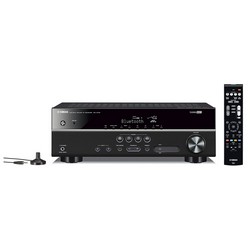
Yamaha RX-V379BL
- Yamaha
- 432
- Overall 4.5/10
- | Amplifier 5/10
- | Audio features 7/10
- | Connectivity 6/10
- | Streaming services 0/10
- | Extensive connection 5/10
- | Multi-room 0/10
- | Additional features 7/10
- | Video features 6/10
- | Multichannel surround 5/10
-
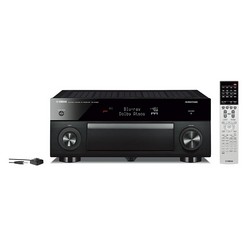
Yamaha RX-A1060BL
- Yamaha
- 40
- Overall 7.8/10
- | Amplifier 8/10
- | Audio features 8/10
- | Connectivity 8/10
- | Streaming services 7/10
- | Extensive connection 7/10
- | Multi-room 8/10
- | Additional features 8/10
- | Video features 10/10
- | Multichannel surround 7/10
-

Yamaha RX-V383BL
- Yamaha
- 414
- Overall 5/10
- | Amplifier 5/10
- | Audio features 5/10
- | Connectivity 5/10
- | Streaming services 3/10
- | Extensive connection 5/10
- | Multi-room 3/10
- | Additional features 5/10
- | Video features 9/10
- | Multichannel surround 5/10
-
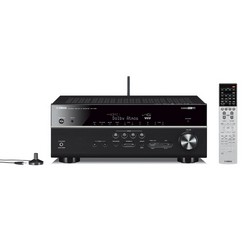
Yamaha RX-V681BL
- Yamaha
- 316
- Overall 7.8/10
- | Amplifier 8/10
- | Audio features 8/10
- | Connectivity 8/10
- | Streaming services 7/10
- | Extensive connection 7/10
- | Multi-room 8/10
- | Additional features 8/10
- | Video features 10/10
- | Multichannel surround 7/10
-
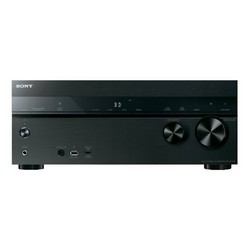
Sony STR-DN1050
- Sony
- 270
- Overall 7.6/10
- | Amplifier 7/10
- | Audio features 7/10
- | Connectivity 8/10
- | Streaming services 7/10
- | Extensive connection 6/10
- | Multi-room 8/10
- | Additional features 10/10
- | Video features 9/10
- | Multichannel surround 7/10
-
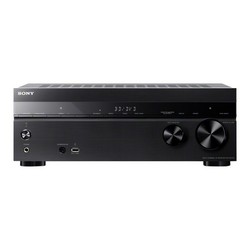
Sony STR-DH770
- Sony
- 395
- Overall 4.7/10
- | Amplifier 6/10
- | Audio features 8/10
- | Connectivity 6/10
- | Streaming services 0/10
- | Extensive connection 5/10
- | Multi-room 3/10
- | Additional features 5/10
- | Video features 7/10
- | Multichannel surround 3/10
-
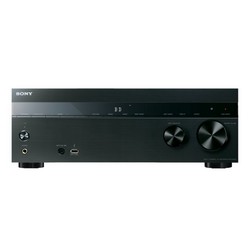
Sony STR DH550
- Sony
- 1218
- Overall 3.7/10
- | Amplifier 5/10
- | Audio features 5/10
- | Connectivity 5/10
- | Streaming services 0/10
- | Extensive connection 5/10
- | Multi-room 0/10
- | Additional features 5/10
- | Video features 5/10
- | Multichannel surround 4/10
-
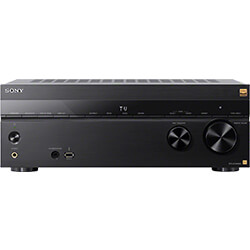
Sony STR-AZ1000ES
- Sony
- Overall 8.4/10
- | Amplifier 7/10
- | Audio features 8/10
- | Connectivity 8/10
- | Streaming services 10/10
- | Extensive connection 8/10
- | Multi-room 8/10
- | Additional features 10/10
- | Video features 9/10
- | Multichannel surround 8/10
-
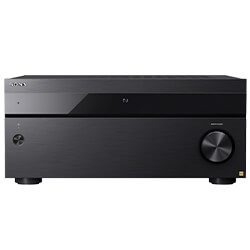
Sony STR-AZ3000ES
- Sony
- Overall 8.5/10
- | Amplifier 8/10
- | Audio features 8/10
- | Connectivity 8/10
- | Streaming services 10/10
- | Extensive connection 8/10
- | Multi-room 8/10
- | Additional features 10/10
- | Video features 9/10
- | Multichannel surround 8/10
-
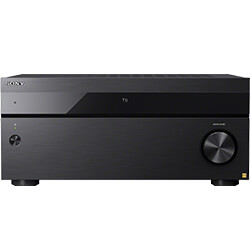
Sony STR-AZ5000ES
- Sony
- Overall 8.6/10
- | Amplifier 9/10
- | Audio features 8/10
- | Connectivity 8/10
- | Streaming services 10/10
- | Extensive connection 8/10
- | Multi-room 8/10
- | Additional features 10/10
- | Video features 9/10
- | Multichannel surround 8/10
-
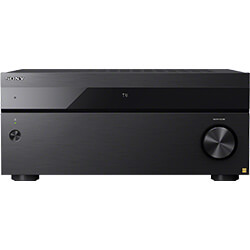
Sony STR-AZ7000ES
- Sony
- Overall 8.7/10
- | Amplifier 10/10
- | Audio features 8/10
- | Connectivity 8/10
- | Streaming services 10/10
- | Extensive connection 8/10
- | Multi-room 8/10
- | Additional features 10/10
- | Video features 9/10
- | Multichannel surround 8/10
-
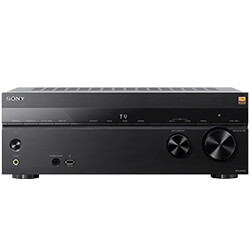
Sony STR-AN1000
- Sony
- Overall 8.5/10
- | Amplifier 8/10
- | Audio features 8/10
- | Connectivity 8/10
- | Streaming services 10/10
- | Extensive connection 8/10
- | Multi-room 8/10
- | Additional features 10/10
- | Video features 9/10
- | Multichannel surround 8/10
-
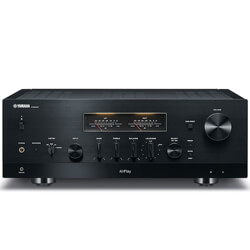
Yamaha R-N2000A
- Yamaha
- Overall 7/10
- | Amplifier 9/10
- | Audio features 8/10
- | Connectivity 8/10
- | Streaming services 8/10
- | Extensive connection 6/10
- | Multi-room 0/10
- | Additional features 10/10
-
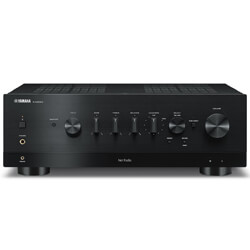
Yamaha R-N1000A
- Yamaha
- Overall 6.8/10
- | Amplifier 9/10
- | Audio features 8/10
- | Connectivity 7/10
- | Streaming services 8/10
- | Extensive connection 6/10
- | Multi-room 0/10
- | Additional features 10/10
-
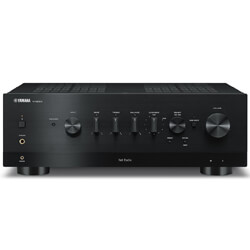
Yamaha R-N800A
- Yamaha
- Overall 6.5/10
- | Amplifier 9/10
- | Audio features 8/10
- | Connectivity 7/10
- | Streaming services 8/10
- | Extensive connection 4/10
- | Multi-room 0/10
- | Additional features 10/10
-
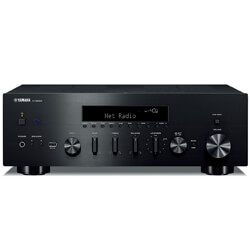
Yamaha R-N600A
- Yamaha
- Overall 6.4/10
- | Amplifier 8/10
- | Audio features 8/10
- | Connectivity 7/10
- | Streaming services 8/10
- | Extensive connection 4/10
- | Multi-room 0/10
- | Additional features 10/10
-
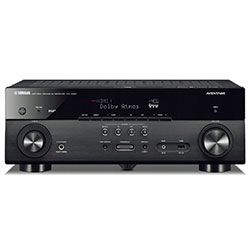
Yamaha AVENTAGE RX-A680
- Yamaha
- 31
- Overall 7.5/10
- | Amplifier 8/10
- | Audio features 9/10
- | Connectivity 8/10
- | Streaming services 9/10
- | Extensive connection 6/10
- | Multi-room 4/10
- | Additional features 10/10
- | Video features 7/10
- | Multichannel surround 7/10
-

Yamaha RX-S602
- Yamaha
- 17
- Overall 6.5/10
- | Amplifier 6/10
- | Audio features 9/10
- | Connectivity 8/10
- | Streaming services 8/10
- | Extensive connection 6/10
- | Multi-room 3/10
- | Additional features 8/10
- | Video features 6/10
- | Multichannel surround 5/10
-
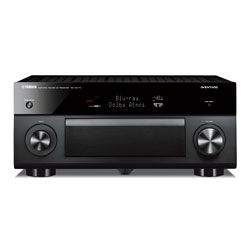
Yamaha RX-A2070
- Yamaha
- 37
- Overall 8.5/10
- | Amplifier 9/10
- | Audio features 8/10
- | Connectivity 9/10
- | Streaming services 7/10
- | Extensive connection 8/10
- | Multi-room 10/10
- | Additional features 10/10
- | Video features 9/10
- | Multichannel surround 7/10
-

Yamaha TSR-5810
- Yamaha
- 11
- Overall 6.7/10
- | Amplifier 7/10
- | Audio features 8/10
- | Connectivity 8/10
- | Streaming services 7/10
- | Extensive connection 6/10
- | Multi-room 3/10
- | Additional features 9/10
- | Video features 6/10
- | Multichannel surround 7/10
-
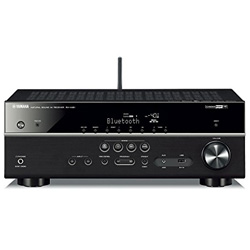
Yamaha RX-V481BL
- Yamaha
- 98
- Overall 5.6/10
- | Amplifier 5/10
- | Audio features 8/10
- | Connectivity 8/10
- | Streaming services 7/10
- | Extensive connection 5/10
- | Multi-room 0/10
- | Additional features 7/10
- | Video features 6/10
- | Multichannel surround 5/10
-
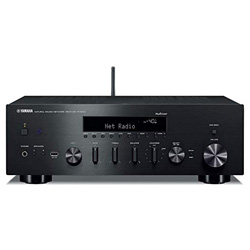
Yamaha R-N602BL
- Yamaha
- Overall 5.8/10
- | Amplifier 7/10
- | Audio features 6/10
- | Connectivity 8/10
- | Streaming services 7/10
- | Extensive connection 5/10
- | Multi-room 0/10
- | Additional features 6/10
-

Yamaha RX-V475
- Yamaha
- 217
- Overall 5.3/10
- | Amplifier 5/10
- | Audio features 6/10
- | Connectivity 8/10
- | Streaming services 6/10
- | Extensive connection 6/10
- | Multi-room 0/10
- | Additional features 6/10
- | Video features 6/10
- | Multichannel surround 5/10
-
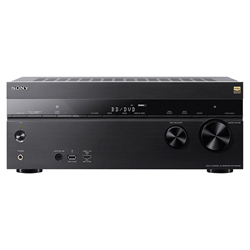
Sony STR-DN1060
- Sony
- 168
- Overall 6.8/10
- | Amplifier 7/10
- | Audio features 7/10
- | Connectivity 8/10
- | Streaming services 6/10
- | Extensive connection 7/10
- | Multi-room 6/10
- | Additional features 8/10
- | Video features 6/10
- | Multichannel surround 7/10
-
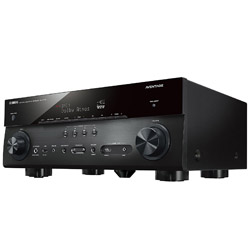
Yamaha RX-A770BL
- Yamaha
- 48
- Overall 8.1/10
- | Amplifier 8/10
- | Audio features 8/10
- | Connectivity 8/10
- | Streaming services 7/10
- | Extensive connection 8/10
- | Multi-room 7/10
- | Additional features 10/10
- | Video features 10/10
- | Multichannel surround 7/10
-

Yamaha RX-V483BL
- Yamaha
- 214
- Overall 6.5/10
- | Amplifier 5/10
- | Audio features 6/10
- | Connectivity 8/10
- | Streaming services 7/10
- | Extensive connection 6/10
- | Multi-room 5/10
- | Additional features 7/10
- | Video features 10/10
- | Multichannel surround 5/10
-
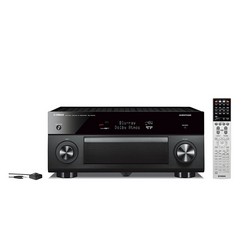
Yamaha RX-A3070BL
- Yamaha
- 53
- Overall 8.7/10
- | Amplifier 9/10
- | Audio features 8/10
- | Connectivity 8/10
- | Streaming services 7/10
- | Extensive connection 9/10
- | Multi-room 10/10
- | Additional features 10/10
- | Video features 10/10
- | Multichannel surround 8/10
-

Yamaha RX-V581
- Yamaha
- 83
- Overall 6.7/10
- | Amplifier 7/10
- | Audio features 8/10
- | Connectivity 8/10
- | Streaming services 6/10
- | Extensive connection 6/10
- | Multi-room 5/10
- | Additional features 7/10
- | Video features 7/10
- | Multichannel surround 7/10
-
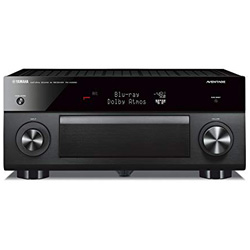 OLD MODEL
OLD MODELYamaha RX-A3060BL
- Yamaha
- 737
-
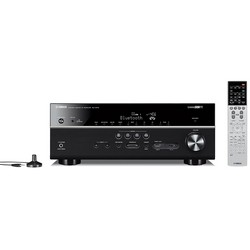 OLD MODEL
OLD MODELYamaha RX-V679BL
- Yamaha
- 493
-
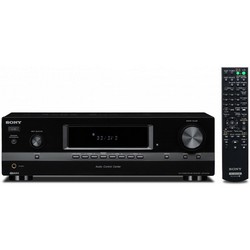 OLD MODEL
OLD MODELSony STR-DH130
- Sony
- 999
-
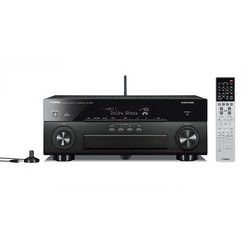 OLD MODEL
OLD MODELYamaha RX-A850
- Yamaha
- 28
-
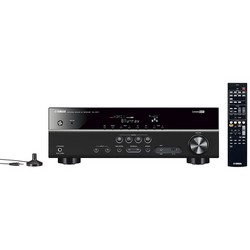 OLD MODEL
OLD MODELYamaha RX-V377
- Yamaha
- 692
-
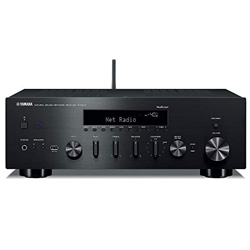 OLD MODEL
OLD MODELYamaha R-N602
- Yamaha
- 27
-
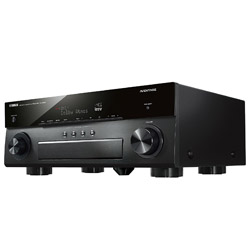 OLD MODEL
OLD MODELYamaha RX-A870BL
- Yamaha
- 32
-
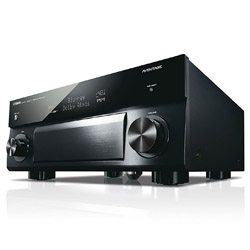 OLD MODEL
OLD MODELYamaha RX-A1070BL
- Yamaha
- 40
-
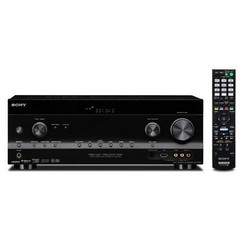 OLD MODEL
OLD MODELSTR-DH830
- Sony
- 62
-
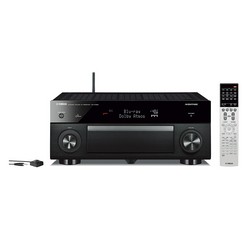 OLD MODEL
OLD MODELYamaha RX-A1050
- Yamaha
- 58
-
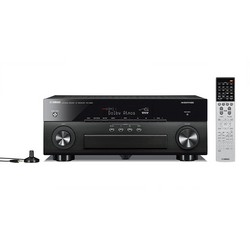 OLD MODEL
OLD MODELYamaha RX-A860BL
- Yamaha
- 32
-
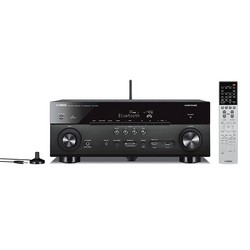 OLD MODEL
OLD MODELYamaha RX-A750
- Yamaha
- 26
-
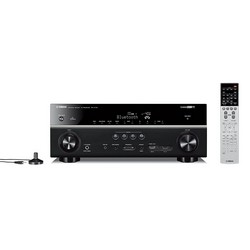 OLD MODEL
OLD MODELYamaha RX-V779BL
- Yamaha
- 20
-
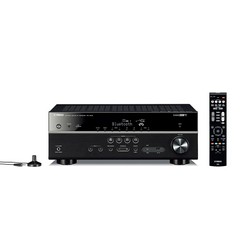 OLD MODEL
OLD MODELYamaha RX-V579BL
- Yamaha
- 19
-
 OLD MODEL
OLD MODELYamaha RX-A2060
- Yamaha
- 35
Sony vs Yamaha
Buying an AVR for a home cinema can be a daunting task for beginners, and even for experienced fans who again plunge into the abyss of an upgrade. In the past few years, AVR technologies and capabilities have constantly evolved in different directions.
Thanks to all the possibilities concentrated in it, the AV receiver is the heart of your media space, it is the hub where all your ideas and experiments come together, this is the place where all the streams of your audio and video content are collected and then distributed, after passing the appropriate processing and transforming into a convenient for consumption format. And in view of the many models on the market, the choice of a single one causes difficulties even for experienced audiophiles. We offer to get acquainted with the overview of brands and make the Sony vs Yamaha receiver comparison.
Sony review

Sony Corporation was established in Tokyo in 1946 and from its first days engaged in the production of professional and household audio and video equipment, including tape recorders. Today, Sony is a multinational corporation with an annual turnover of about $ 8 billion.
At the same time, the main production facilities at which Sony receivers are assembled are located in Malaysia - which means that their build quality is noticeably better than that of goods from China but slightly inferior to equipment assembled directly in Japan. In the manufacture of this technology, only high-quality electronic components are used, as well as reliable and environmentally friendly materials.
As an example for Yamaha vs Sony comparison, the advantages of Sony receivers can be seen on the example of the STR-DN1080 model - the flagship of the current receiver line, which has 165 W/channel power, support for many sound quality improvement technologies (Sound Optimizer, DSD, DSEE HX, Pure Direct, and Digital Legato Linear), DCAC mode - automatic calibration of the audio subsystem and support for audio formats LCPM, DTS HD MA and DTS HD HR.
Yamaha review

Yamaha has a history of over 100 years. From the moment that the young entrepreneur Thorakusu Yamaha first made a high-quality reed organ. Soon, the company he founded not only released the first piano in Japan but also became widely known abroad.
After such a brilliant start, the company continued its movement towards popularity and became one of the best manufacturers of musical instruments in the world.
Today, the company is a recognized leader in various fields, from the production of musical instruments and audio-video products to information technology, media services, the production of home furnishings, auto parts, metals, as well as the development of music education and spa business.
If in this Sony vs Yamaha review, we consider the current receivers presented on the company's website, then we can note several important technological solutions. Surround: AI technology will debut on older models that use ESS SABER professional-series DACs (7.2-channel RX-A1080 and 9.2-channel RX-A2080 / RX-A3080) on older models. It uses the power of artificial intelligence to improve the transmission of dialogs and effects in noisy scenes. And without exception, all the new items in the series will receive MusicCast Surround technology (allowing wireless speakers to be included in the 5.1-channel configuration) and an improved case with fifth vibration-absorbing support. But the RX-A780 and its more powerful version RX-A880 have a more advanced Precision EQ calibration.
Popular receiver comparisons
